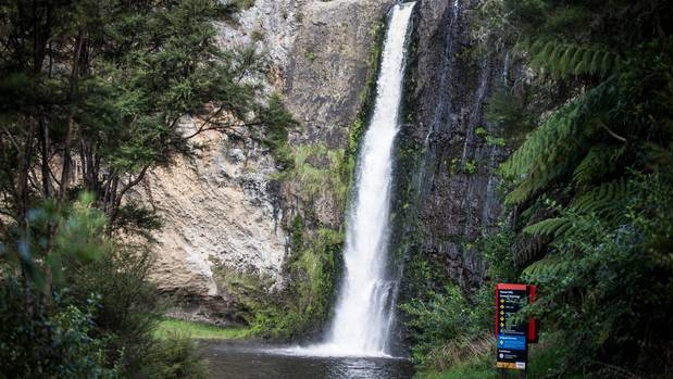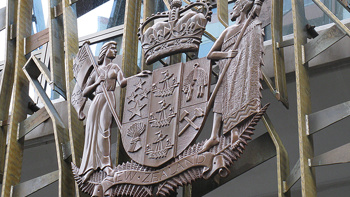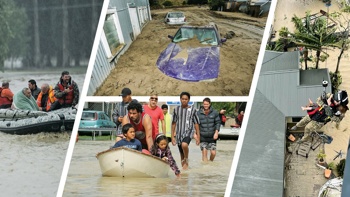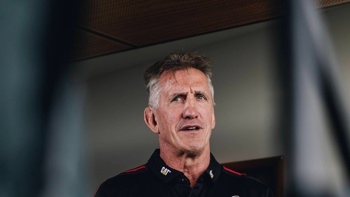
A quest to capture the perfect social media snap is inspiring trips to hard-to-get-to spots, putting lives at risk.
Water safety experts say that while social media is a useful tool for promoting tourism in New Zealand, it is creating the perception certain activities are less dangerous than the reality.
"Anecdotally, we see the link," said Water Safety New Zealand chief executive Jonty Mills.
"Some of our rescue services — the likes of Surf Life Saving — are seeing more incidents where people are getting into trouble based on this type of activity."
Social media also distracted parents supervising children in the water.
"Social media — Facebook, Instagram — can certainly be a worrying distraction, particularly when toddlers are involved," Mills said.
"When you have toddlers, that constant adult supervision — keeping your eyes on them at all times, that is the only foolproof solution to keeping them safe in and around water.
"We all know how easily toddlers can disappear."
Mills said the growing tendency to document our lives with a drive for attention or likes online helped popularise activities or particular spots.
An investigation into the 2017 death of Auckland University student Rachael De Jongmentioned the group she was in were taking "selfies" on a rock in the middle of the Waikato River, before she was swept away to her death.
/arc-anglerfish-syd-prod-nzme.s3.amazonaws.com/public/RLPT526DXNFCRFUMDHDSYWHT7U.jpg?width=496&height=700&mode=max)
Rachael De Jong drowned near Taupo on Waitangi Day. Photo / Supplied
"The photo shows the rapids in the background but clearly the group had no idea of what to expect and did not appreciate the risks, which if you had not been in the area before, is totally understandable," Coroner Bain wrote.
Later in 2017 Kiwi woman Toni Kelly died in hospital after sustaining a serious brain injury when she fell from a second storey window in London while taking a selfie.
And Kiwi mother-of-two Carmen Greenway died in 2016 after falling off her bike while riding home from her mother's birthday party in London - just moments after she had taken a selfie.
An inquest heard she died six days later after suffering an epileptic seizure and heart attack in hospital due to the head injuries suffered in the crash.
A study conducted at the India Institute of Medical Sciences last year found the number of people who were killed while taking selfies in dangerous locations was increasing.
An average of 43 people per year have died while taking selfies since 2011. Drowning and falls were among the biggest killers.
In a New Zealand context, Mills said pictures or videos with location tags often drove people to popular spots and promoted activities like jumping from rocks, diving, or surfing.
Mt Maunganui man Timmy Nator came under fire in February last year when he surfed the raging rapids of Huka Falls in Taupō on a body board, filming the ride with a Go-Pro attached to his helmet. He was inspired by a video of another man who had surfed the rapids before him.
/arc-anglerfish-syd-prod-nzme.s3.amazonaws.com/public/BKZPRTJCKJE2VA5J6PI2LCRL7U.jpg)
Aspiring model Toni Kelly somersaulted to her death following a night out. Photo / Supplied
The footage was widely shared online.
At the time, Water Safety New Zealand said Nator was playing "Russian roulette" with his life.
Talking about stunts like Nator's, Surf Life Saving Northern Region's Matt Williams suggested online content was a development from the old format — magazines featuring big wave surfers and the likes.
"The reality is that technological advances have now meant veritably everyone, not just the latter-day replacements of professionals and experts of the past, having the motivation to partake in these riskier behaviours and record and share them.
"What they are lacking is the skill and ability to ensure they are mitigating the risk associated with these activities — which is leading to a when, not if, scenario for injury occurring.
"Current references are jumps or backflips off high wharves or coastal cliffs and rock structures, or people getting wiped out by shorebreaks."
Late last year the death of a tourist on the Tongariro Alpine Crossing — hugely popular among tourists wanting an Instagrammable shot in front of the lakes and craters — prompted the Department of Conservation to issue a warning that snaps of an outdoor adventure on social media often didn't portray the risk involved.
The Mountain Safety Council released a video two weeks later showcasing the risk of the crossing.
Last weekend former Bachelor NZ stars Art Green and Matilda Rice posted several snaps to Instagram of their adventures on the route.
Speaking to the Herald on Sunday about a link between social media and risky situations, Green said they wouldn't go out of their way to get the perfect snap.
"I think people probably do do that, put themselves in risky situations and I think people should be mindful of [the risks]," he said.
DoC visitor risk advisor Don Bogie said he'd witnessed people queue at a popular spot like Roy's Peak — between Wanaka and Glendhu Bay — to get the "classic snap".
There was only so much DoC could, and would do to keep people from danger, Bogie said.
"Our emphasis is making sure that people don't come to harm on those high-use facilities we're providing.
"But if people want to do other stuff, if they want to climb over the barrier and walk close to some cliff edge ... we'll try to discourage it but we can't physically stop people from doing it."
In November, a tourist shared a photo of a long line of people waiting to take photos at the end of the Roy's Peak lookout, with the caption "the social media queue".
It was dubbed New Zealand's most Instagrammed hike.
Briton Lee Thompson's selfie from the top of the 38m-high Christ the Redeemer statue in Brazil made headlines in 2014 after he convinced the tourist board of Brazil to let him attempt the climb.
Thompson told media the climb was scary, but well worth it for the "most fun selfie" he'd ever taken.
'You just hope you pop up relatively soon'
/arc-anglerfish-syd-prod-nzme.s3.amazonaws.com/public/2YPUVTRHIJB2JKRZIL7UFDKZRU.jpg)
Timmy Nator before body boarding the rapids at Huka Falls last year. Photo / Supplied
A man who filmed himself boogie-boarding down Huka Falls says his life-or-death stunts are spurred by adrenaline and the thrill of entertaining others.
Mt Maunganui local Timmy Nator, 35, surfed the raging rapids of the falls on a body board in February last year, after watching a video of another man survive the ride.
Though Nator agreed his stunt was dangerous, he claimed he trained for it for several months.
He equipped himself with safety gear — a lifejacket, a helmet and flippers, which were secured to his feet with insulation tape to ensure they stayed put.
A small crowd of visitors and tourists watched from the bridge as Nator jumped into the water on the bodyboard.
Nator recalled his watery ride as "a bit of a buzz".
"You're pretty much underwater the whole time, you pop up here and there in between a bit of white water.
"Then you go over the falls and you push down and it's pitch black ... you just hope you pop up relatively soon."
Though he knew there was a chance something would go wrong, Nator said this wasn't on his mind.
"If you think the worst then it's probably more likely to happen."
The stunt was slammed by Water Safety New Zealand as a game of "Russian roulette".
When he was 18, Nator earned the attention of Sydney police after climbing the Sydney Opera House one New Year's Eve for the purpose of gaining a good view for a fireworks display.
Nator said he would generally record his antics and post them on both YouTube and Facebook pages.
"Anyone can really say they've done anything, but unless you've got the proof, then ... you don't really know if it's happened or not."
He has been considering a few stunts for the coming months, including abseiling down Mauao with sheets tied together.
Nator advised any potential copycat to think twice about attempting the moves.
Take your Radio, Podcasts and Music with you









